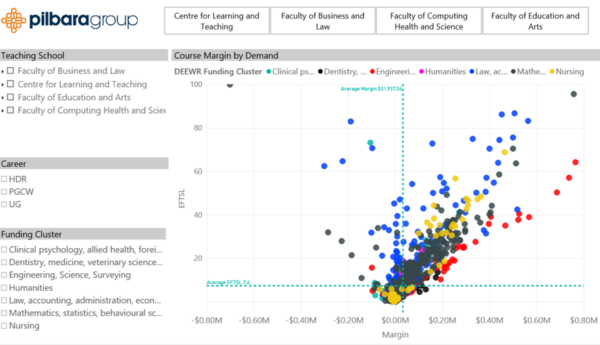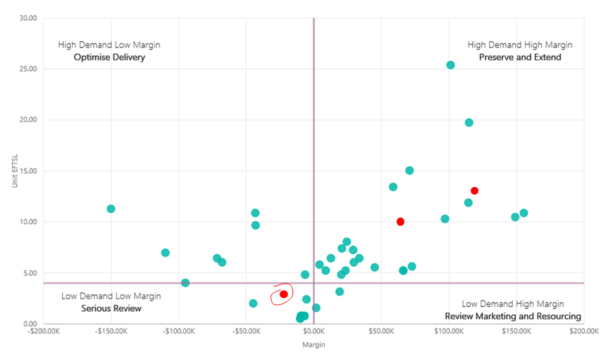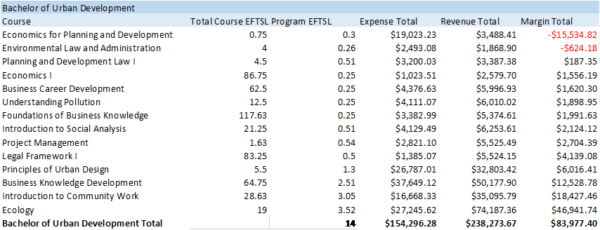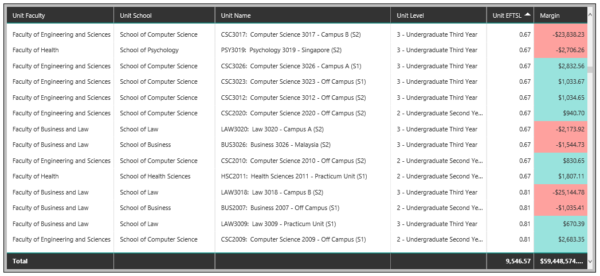It is not uncommon for schools to receive pressure to address their low enrolment courses (subjects). For example, they may be told that they shouldn’t be running courses with fewer than, say, six students in them.
So how do you go about distinguishing the ‘good’ courses from the ‘bad’ courses? It is not a simple process, nor is it overtly obvious – course analysis is like peeling an onion, there are many layers that need to be looked at before getting to the core of the issue.
Identifying the courses to review:
While low enrollment courses are the frequent recipients of these types of reviews they are not always the courses that should actually be addressed. Examining the scatter plot below (enrollment is plotted against the vertical and courses left of this axis are making a loss) we can see the largest losses are actually achieved by some of the courses with the highest enrollment. Reviewing the teaching methodologies for just a couple of these courses could have a much larger financial impact than all the low enrollment courses combined.
Returning our attention to the low enrollment courses that are running at a loss in the plot below, the red dots indicate the same course but taught in three different locations or sessions. The circled course may be taught at a new campus for the first time, or taught overseas, or may be required to allow students to fast track their degree by being taught in the summer. Hence there could be legitimate reasons to retain this loss-making instance, especially as the course as a whole is doing well. Conversely, it could be an instance that should be considered for teach-out whilst retaining the other two high-load instances of that course.
The course is an integral part of a program:
Low enrollment courses are frequently highly specialized third or fourth year courses that form a key component of a program, so it does not pay to review any course in isolation. For example, a course may be highlighted as being low enrollment and making a loss:
But when put in perspective against the program it is supporting, the program as whole looks very healthy (note that this program is only receiving 40% (or 0.3 out of 0.75 EFTSL[1] / enrolments) of the course):
[1] EFTSL – Equivalent Full-Time Student Load
So while an individual course may come under scrutiny it is essential to understand its role in the programs being offered, and what the health of the programs are in their entirety.
Are the low enrolment courses actually making a loss?
Just because a course has low student numbers it doesn’t necessarily mean it is running at a loss as shown in the table below. The delivery methods being used can have a high impact on the cost base of these courses. The types of students enrolled will also have a direct impact on the revenue, i.e. domestic vs international students. Courses with low student numbers can be profitable, so it doesn’t pay to just draw a line in the sand and blindly assume that all small enrollment courses aren’t contributing to the university’s bottom line.
Download the full whitepaper here: www.pilbara.co/whitepaper



